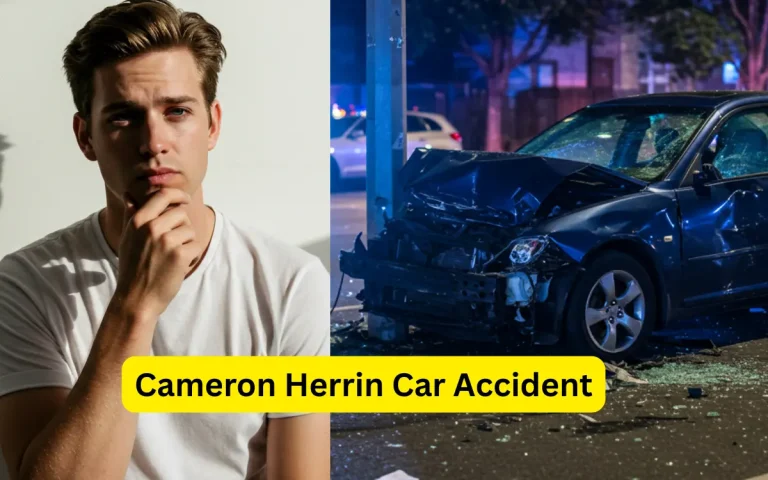The Tragic Story Behind the Princess Diana Car Accident: What Really Happened on August 31, 1997
It was just past midnight on August 31, 1997, when the world woke up to one of the most shocking news stories of the decade: Princess Diana had died in a car accident in Paris, France. The sudden death of the “People’s Princess” sparked an outpouring of grief, intense media coverage, and countless conspiracy theories that still linger today.
In this article, we’ll take you through a detailed account of what happened that night, the events that led to the accident, the aftermath, and the ripple effects that still touch millions around the world. We’ll also explore the widely circulated theories and help you separate fact from fiction using clear and simple language.
Let’s begin this emotional journey together.

A Fairytale That Ended Too Soon
Lady Diana Spencer’s life had all the elements of a fairytale. Born on July 1, 1961, she grew up in a British aristocratic family and later became the Princess of Wales after marrying Prince Charles in 1981. Their royal wedding was watched by over 750 million people worldwide.
However, Diana’s life behind palace walls wasn’t always easy. Despite the fame, wealth, and admiration, she endured a rocky marriage, public scrutiny, and personal challenges that often left her feeling isolated.
Her decision to divorce Prince Charles in 1996 shocked the world. But Diana continued to shine in her own way—devoting her time to charitable work, humanitarian causes, and, perhaps most notably, becoming a global advocate for banning landmines and raising awareness about HIV/AIDS.
Also Read: Dan Bongino Wife Accident
The Fateful Night in Paris
On the night of August 30, 1997, Diana was in Paris with her companion Dodi al-Fayed, son of Egyptian billionaire Mohamed al-Fayed. The couple had just wrapped up a romantic holiday on the French Riviera and had checked into the lavish Ritz Paris Hotel.
Their evening took a tragic turn after midnight.
They were trying to escape paparazzi photographers who had been aggressively tailing them since their arrival. To avoid the press, Diana and Dodi decided to leave through the hotel’s rear entrance. Accompanied by their chauffeur, Henri Paul, and bodyguard Trevor Rees-Jones, they got into a black Mercedes-Benz S280 and sped off into the night.
Just a few minutes later, their vehicle crashed inside the Pont de l’Alma tunnel.
What the Official Report Says
According to the official investigations, Henri Paul—the driver—was speeding and under the influence of alcohol and prescription drugs. The car was reportedly going at about 65 mph in a zone restricted to 30 mph.
- Dodi al-Fayed and Henri Paul died instantly.
- Princess Diana was still alive when rescuers arrived but later died at the Pitié-Salpêtrière Hospital at 6:00 a.m. on August 31, 1997.
- Trevor Rees-Jones, the only survivor, suffered serious injuries but recovered.
The World’s Response: A Wave of Grief
The reaction was immediate and global. Within hours, mourners began gathering outside Kensington Palace, leaving behind flowers, notes, candles, and stuffed animals. The floral tribute reached up to 9 meters high near the palace gates.
The British Royal Family, known for their traditional composure, was criticized for remaining silent during the early days of mourning. Eventually, Queen Elizabeth II addressed the nation, praising Diana’s warmth and humanity.
Her funeral, held on September 6, 1997, was watched by over 2.5 billion people worldwide. It was a truly global moment of sorrow.
Anecdote: The Two Princes Left Behind
One of the most heart-wrenching images from that day is of Prince William and Prince Harry, then aged 15 and 12, walking behind their mother’s coffin. It’s a sight that captured the emotional devastation of a personal tragedy lived out on the world’s stage.
Years later, Prince Harry would recall the pain of losing his mother and how it shaped his mental health journey. It’s a reminder that behind every public figure lies a private story full of human emotion.
Conspiracy Theories: What Some People Believe Happened
As with many high-profile deaths, theories began to spread like wildfire. Some people couldn’t believe that Diana—so young, vibrant, and full of life—had simply died in a car crash.
Here are some of the most widely believed conspiracy theories:
1. The Driver Wasn’t Just Drunk—He Was Planted
Some believe Henri Paul wasn’t just drunk but was working for British or French intelligence. According to The Independent, some even argue that Paul’s toxicology report was faked.
2. The Car Was Flashed by a Bright Light
Several witnesses claimed to see a bright flash just before the car crashed. Some suggest it was a planned tactic to blind the driver. But police found no concrete proof.
3. Diana Was Pregnant
Another theory—pushed heavily by Mohamed al-Fayed—is that Diana was pregnant with Dodi’s child and the royal family couldn’t accept that. However, the post-mortem reports showed no signs of pregnancy.
These theories, while captivating, have all been debunked by Operation Paget, a British investigation conducted in 2004 that concluded the crash was simply a tragic accident.
The Lasting Legacy of Princess Diana
While her life ended far too soon, Princess Diana’s impact continues to echo across generations. Her honesty about her struggles with mental health, her compassion for the sick and poor, and her love for her children made her one of the most beloved figures in modern history.
Organizations like The Diana Award continue to honor her legacy by supporting young leaders and anti-bullying initiatives.
Even decades later, she remains a symbol of elegance, kindness, and courage.
What We Can Learn from the Princess Diana Car Accident
If there’s one thing the Princess Diana Car Accident teaches us, it’s that life is incredibly fragile—no amount of status, fame, or power can shield us from tragedy.
Here are some life lessons we can all take from this story:
1. Be Aware of the Impact of Media
The intense chase by paparazzi played a key role in the accident. It raises the question—where do we draw the line between public interest and privacy?
2. Prioritize Safety
Wearing seat belts saves lives. Of the four people in the car, only Trevor Rees-Jones wore his seat belt—and he was the only one who survived.
3. Celebrate Life While You Can
Diana’s life was filled with ups and downs, but she made the most of her platform. She lived with heart, and that’s something we should all aim for.
How This Story Still Resonates Today
Pop culture, media ethics, and royal family dynamics have all been shaped by this event. Films like The Queen and documentaries such as Diana: In Her Own Words continue to explore the emotional depth of her story.
Even now, stories about Princess Diana Car Accident trend every year on August 31, showing the world hasn’t forgotten her.
Helpful Resources to Explore More
If you’d like to explore this topic further, here are some resources:
- BBC’s Timeline of Events
- The Diana Award
- Operation Paget Final Report
- Princess Diana’s Biography
Final Thoughts: Why Her Story Still Matters
It’s been over two decades since that heartbreaking night in Paris, but Princess Diana’s story continues to move people of all ages. Whether it’s her warm smile, her fearless activism, or the love she had for her children, Diana left a mark that no accident could ever erase.
Her tragic death reminds us of the power of empathy, the importance of living authentically, and the impact one person can have on millions.
Princess Diana Car Accident isn’t just a headline from the past—it’s a moment that taught the world to care more, love deeper, and never take life for granted.






